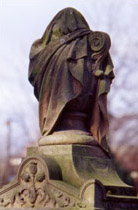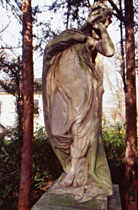| Armenia | Անթիոփա | |
| Bulgaria | траурницу | |
| China | 黄缘蛱蝶 | |
| Denmark | Sørgekåbe | |
| Germany | Trauermantel; Truermantel (plattdüütsch) | |
| Estonia | Leinaliblikas | |
| Finland | Suruvaippa | |
| France | Morio; Manteau Royal; Velours; Manteau-de-deuil | |
| United Kingdom (Great Britain) | Camberwell Beauty; mantell alarus (walisisch); mentyll galarus (walisisch) | |
| Ireland | Camberwell Beauty; Bé na fallainge (goidelisch) | |
| Iceland | Sorgarskikkja | |
| Iran | پروانه بالاپوشدار (persisch) | |
| Italy | Antiopa; Plurënt (ladinisch) | |
| Japan | キベリタテハ; Kiberi-tateha | |
| Kazakhstan | Ҡара күбәләк | |
| Latvia | Bērzu raibenis | |
| Lithuania | Šeirys | |
| Mexico | Mariposa Velo de Duelo | |
| Kingdom of the Netherlands | Rouwmantel; Roumantel (friesisch) | |
| Norway | Sørgekåbe | |
| Austria | Trauermantel | |
| Poland | Rusałka żałobnikuruvaippa; Rusałka żałobnik | |
| Portugal | Nymphalis antiopa | |
| Russia | траурницу; Traurnitca | |
| Serbia | Краљев плашт | |
| Sweden | Sorgmantel | |
| Switzerland | Trauermantel; Truurmantel (alemannisch) | |
| Slovakia | Babôčka osiková | |
| Spain | Antiopa; Vellutada del salze (katalanisch); L'antiope (asturisch) | |
| Czechia | Babočka osiková; Černokabátník1; lidově černopláštník | |
| Turkey | Yas pelerini kelebeği, Sarı Bantlı Kadife | |
| Ukraine | Traurnitcya, Жалібниця | |
| Hungary | Gyászlepke | |
| United States | Mourning Cloak |
1The Czech translation of ‘mourning cloak’ is ‘Černokabátník’, but this name is rarely used for the mourning cloak. ‘Babočka osiková’ refers to the family ‘Nymphalidae (noble butterflies)’, as well as the food plant ‘Trembling Poplar [aspen] (Populus tremula)’ (source: Joseph Belicek, 2009).
The long-established German name Trauermantel refers to the butterflies' resemblance to an item of clothing:
The mourning cloak.
A similar name that is no longer used today is Trauervogel Goeze; Donndorf, 1803 - Europäische Fauna oder Naturgeschichte der europäischen Thiere in angenehmen Geschichten und Erzählungen für allerley Leser vorzüglich für die Jugend.
Pleureusenvogel Esper, 1777 - Die Schmetterlinge in Abbildungen nach der Natur, Pleureuse de Geer, 1776 - Abhandlungen zur Geschichte der Insekten or Schöne Pleureuse de Geer, 1776 - Abhandlungen zur Geschichte der Insekten, German names that are no longer common today refer to the so-called Pleureuse (pronounced in French). These are mourning bandages, which were part of the mourning costume in the 17th and 18th centuries in particular (white cloth bandages around the cuffs of the sleeves).
In 1781, the Kaiserslautern doctor and botanist Johann Adam Pollich (1741-1780)Johann Adam Pollich Pollich, 1781 - Von Insekten, die in des Ritters v. Linné Natursysteme nicht befindlich sind gave the butterfly the name Weißsaum (engl.: White Border) because Johann Adam Pollich (1741-1780)Johann Adam Pollich mistook an overwintered butterfly with a white border for a new species Schulte, 2007 - Die Tagfalter der Pfalz, Band 1.
Arno Bergmann (1882-1960)Arno Bergmann, a lepidopterist from Thuringia, gave the butterfly the name Hain-Birken-Salweiden-Prachtfalter (engl.: Grove Birch and Willow Fritillary) in the 1950s Bergmann, 1952 - Die Großschmetterlinge Mitteldeutschlands. At the time, he tried to assign German names that reflected the habitat of the butterflies.
Johann Andreas Benignus Bergsträsser (1732-1812)Johann Andreas Benignus Bergsträsser called it Palmweidenfalter (engl.: Palm Willow Butterfly) Gönner, 1928 - Der Trauermantel und sein Formenkreis, Candid Huber (1747-1813)Candid Huber Weidendornfalter (engl.: Willow Thorn Butterfly). He was also known as Birkenflatterer and Mantille Hoffmann, 1846 - Das Buch der Welt.
Also Wasserweidenfalter (engl.: Water Willow Butterfly) Goeze; Donndorf, 1803 - Europäische Fauna oder Naturgeschichte der europäischen Thiere in angenehmen Geschichten und Erzählungen für allerley Leser vorzüglich für die Jugend or Wasserweiden-Tagfalter (engl.: Water Willow Butterfly) Bechstein, 1818 - Die Forst- und Jagdwissenschaft nach allen ihren Theilen für angehende und ausübende Forstmänner und Jäger were formerly used names of the  Camberwell BeautyNymphalis antiopa (Linnaeus, 1758)Mourning CloakCamberwell Beauty.
Camberwell BeautyNymphalis antiopa (Linnaeus, 1758)Mourning CloakCamberwell Beauty.
Baron Carl De GeerBaron Carl De Geer called  Camberwell BeautyNymphalis antiopa (Linnaeus, 1758)Mourning CloakCamberwell Beauty Mohr De Geer, 1778 - Abhandlungen zur Geschichte der Insekten, Georg Jacob Gladbach (1736-1796)Georg Jacob Gladbach Mantillgen (later: Mantillchen) Gladbach, 1775 - Nahmen- und Preiß-Catalogus der Schmetterlingen oder der Tag- und Nachtvögels: Nach des Rösels vier Theilen der Insekten-Belustigung und Kleemanns Beytrag, wie auch nach Linneischer Benennung.
Camberwell BeautyNymphalis antiopa (Linnaeus, 1758)Mourning CloakCamberwell Beauty Mohr De Geer, 1778 - Abhandlungen zur Geschichte der Insekten, Georg Jacob Gladbach (1736-1796)Georg Jacob Gladbach Mantillgen (later: Mantillchen) Gladbach, 1775 - Nahmen- und Preiß-Catalogus der Schmetterlingen oder der Tag- und Nachtvögels: Nach des Rösels vier Theilen der Insekten-Belustigung und Kleemanns Beytrag, wie auch nach Linneischer Benennung.
The name Goldene Tresse listed in Bechstein; Scharfenberg, 1805 - Vollständige Naturgeschichte der schädlichen Forstinsekten is also interesting - Tresse comes from the French and represents, among other things, a border on an item of clothing.
In Low German (plattdüütsch) it is called Truermantel.
Summarising the German names given to  Camberwell BeautyNymphalis antiopa (Linnaeus, 1758)Mourning CloakCamberwell Beauty:
Camberwell BeautyNymphalis antiopa (Linnaeus, 1758)Mourning CloakCamberwell Beauty:
- Birkenflatterer
- Goldene Tresse
- Hain-Birken-Salweiden-Prachtfalter
- Mantielle
- Mantillchen
- Mantillgen
- Mohr
- Palmweidenfalter
- Pleureuse
- Pleureusenvogel
- Schöne Pleureuse
- Trauermantel
- Trauervogel
- Wasserweidenfalter
- Wasserweiden-Tagfalter
- Weidendornfalter (Weiden-Dornfalter)
- Weißsaum
From: Einige Schriften der Altdorfischen Deutschen Gesellschaft, 1760:
Die Abrienne wiech dem Amazonenkleide,
Die slaveryesclavage verschwandt, da das Mantillgen kam.
Es war der Göttin Putz, bald kurz, bald lang, bald breite,
Und feine Mode war, die sie nicht an sich nahm.
The name Mourning Cloak is mainly used in the English-speaking world in the  United States
United States United States and is the equivalent of the German name Trauermantel. Around the turn of the 19th century, the name Antiopa Weed, 1917 - Butterflies worth knowing was also once common in the
United States and is the equivalent of the German name Trauermantel. Around the turn of the 19th century, the name Antiopa Weed, 1917 - Butterflies worth knowing was also once common in the  United States
United States United States.
United States.
The British name Camberwell Beauty (first used in Harris, 1766 - The Aurelian) refers to the village of Camberwell, which was located outside London at the time. In 1748, the  Camberwell BeautyNymphalis antiopa (Linnaeus, 1758)Mourning CloakCamberwell Beauty was first sighted there in
Camberwell BeautyNymphalis antiopa (Linnaeus, 1758)Mourning CloakCamberwell Beauty was first sighted there in  England
England England officially Wilkes, 1749 - The English Moths and Butterflies (see also Honouring (Camberwell/London)).
England officially Wilkes, 1749 - The English Moths and Butterflies (see also Honouring (Camberwell/London)).
The name Grand Surprise (first used in Harris, 1766 - The Aurelian) alludes to its rare appearance in the British Isles.
British names that are no longer in use today but are still beautiful are White Border Weed, 1917 - Butterflies worth knowing, White-Bordered Haworth, 1803 - Lepidoptera Britannica; sistens digestionem novam insectorum Lepidopterorum quæ in Magna Britannia reperiuntur and White Petticoat Cockayne, 1921 - The White Border of Euvanessa antiopa L..
The word white is a reference to the fact that many  Camberwell BeautyNymphalis antiopa (Linnaeus, 1758)Mourning CloakCamberwell Beauties with white borders were sighted in the British Isles and are still sighted today. At the time, it was assumed that the adult butterflies were a native breed (see Research about border-color (Outline)).
Camberwell BeautyNymphalis antiopa (Linnaeus, 1758)Mourning CloakCamberwell Beauties with white borders were sighted in the British Isles and are still sighted today. At the time, it was assumed that the adult butterflies were a native breed (see Research about border-color (Outline)).
The names Yellow Edge, Yellow Edge Butterfly Weed, 1917 - Butterflies worth knowing and Yellow Bordered Butterfly have the yellow border instead of the white one.
Also the names Willow Butterfly (first used in Wilkes, 1749 - The English Moths and Butterflies) and Willow Beauty Williamson, 2002 - Nature Trails: A bashful beauty, which allude to the caterpillar food plant willow (German: Weide) are no longer used today.
Summarising the English names given to  Camberwell BeautyNymphalis antiopa (Linnaeus, 1758)Mourning CloakCamberwell Beauty:
Camberwell BeautyNymphalis antiopa (Linnaeus, 1758)Mourning CloakCamberwell Beauty:
- Antiopa
- Camberwell Beauty
- Grand Surprise
- Mourning Cloak
- White Border
- White-Bordered
- White Petticoat
- Willow Beauty
- Willow Butterfly
- Yellow Bordered Butterfly
- Yellow Edge
- Yellow Edge Butterfly
In French-speaking countries, the name Morio is used for the  Camberwell BeautyNymphalis antiopa (Linnaeus, 1758)Mourning CloakCamberwell Beauty today.
Camberwell BeautyNymphalis antiopa (Linnaeus, 1758)Mourning CloakCamberwell Beauty today.
It is also called Velours, Manteau royal or Manteau-de-deuil.
In the past, the name Le Manteau bigarré Esper, 1777 - Die Schmetterlinge in Abbildungen nach der Natur (engl.: The colourful coat) was used for it.







